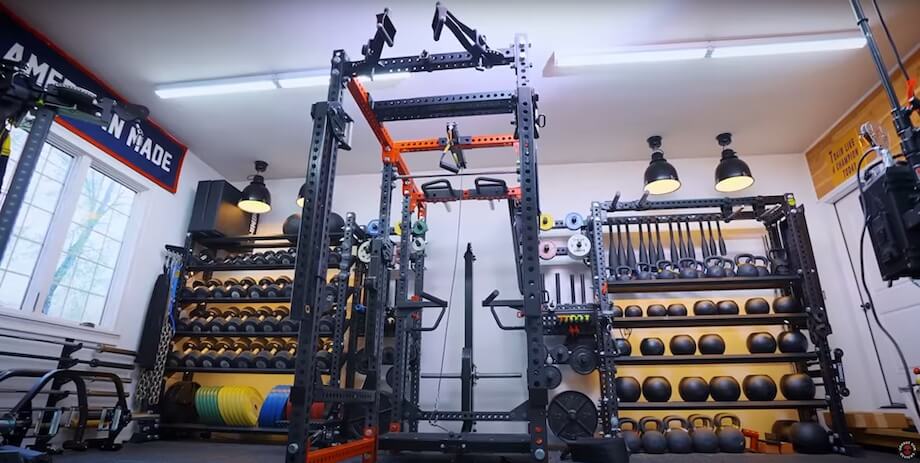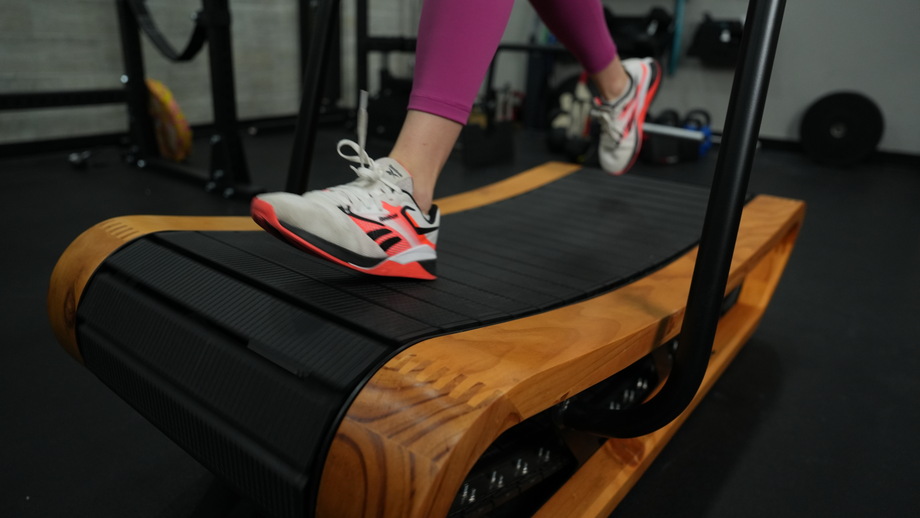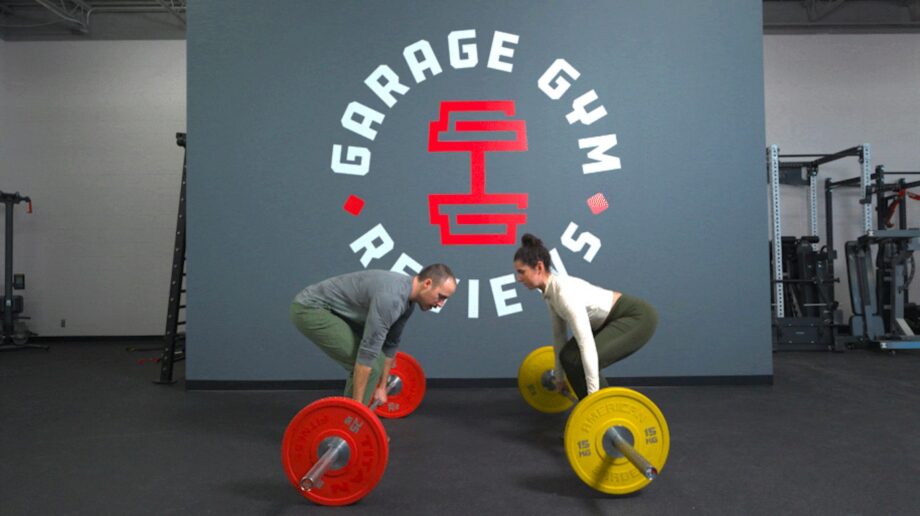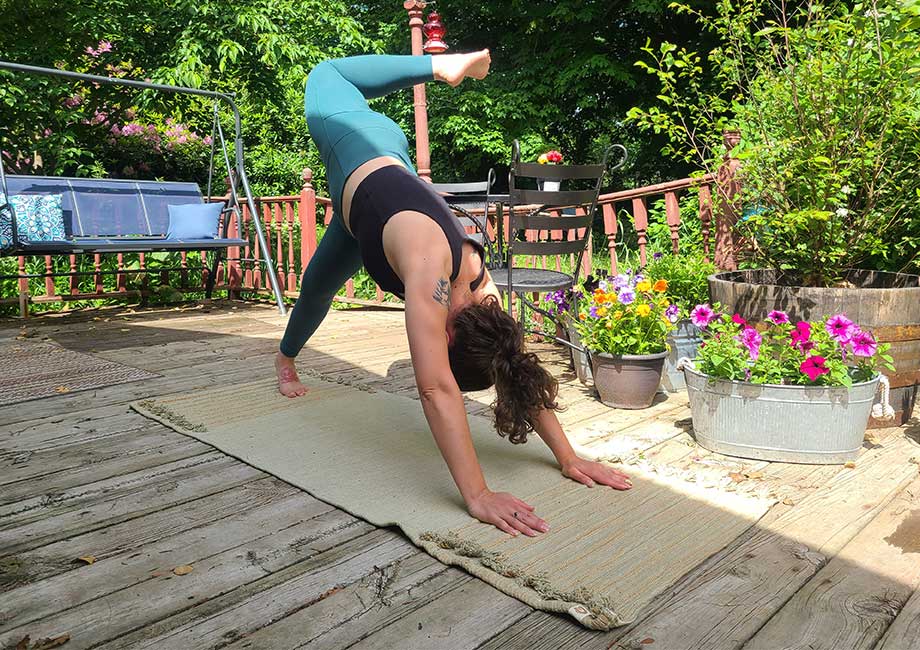Learn how hitting the weight room can make you a better runner.
Runners love to run. I’ve been a distance runner since high school, having competed in statewide meets and accumulating several half-marathon, 10K, and triathlon finishes. I know how hard it can be to peel yourself away from the pavement or the trails and perform another type of training. However, one of the best things I ever did for myself was introduce new types of exercise to my routine and allow myself to focus on building strength and power.
Not only did resistance training open me up to a whole new world of physical skills and capabilities, but it made me a better runner. And it can do that for you, too, if you can shed the “runners must run and only run” mindset that’s so ubiquitous in the endurance community.
Ahead, I use my expertise as a certified personal trainer and scientific evidence to debunk myths about the effects of strength training on endurance—and explain all the reasons why strength training for runners is a must. Plus, I provide step-by-step instructions for the best strength exercises for runners, and there’s a free strength workout for you to try.
Medical disclaimer: This article is intended for educational and informational purposes only. It is not intended as a substitute for medical advice. For health advice, contact a licensed healthcare provider.
Scoping Out Strength Training for Runners
Strength training for runners isn’t the same as strength training for hypertrophy or powerlifting or Olympic weightlifting. For runners, strength training serves a specific purpose—injury prevention—but it comes along with many other benefits as well.

Running-specific strength training protocols, ideally, will be concurrent to the running training plan. This means that instead of pumping up your heart rate, you’re focusing on strength, power, and explosiveness—not endurance, which you get enough of out on the pavement.
This doesn’t mean you need to hit a new one-rep max each week (definitely don’t attempt that), but it does mean you should generally refrain from cardio bunny tendencies and avoid repping out sets of 20 squats at 40% of your max during every session.
Instead, runners should focus on moderately heavy weights and moderate rep ranges, such as three sets of five to seven reps at 60 to 80% of your one-rep max, with some near-maximal training days scheduled in1.
Explosive plyometric exercises, such as box jumps and jump squats, have a place in a running workout routine, too, as evidenced by a 6-week plyometric training program2 that improved running economy in recreational runners.
Isometric strength training has also been shown to improve endurance, such as in this 2023 trial in Research Quarterly for Exercise and Sport3.
Does Strength Training Mess With Running Performance?
Let’s bust a myth.
Some runners may argue that training one discipline (strength) will inhibit the other (endurance) and vice versa. While some research4 shows this to be true—and it can certainly be framed this way if you look at it from a time availability standpoint—more recent research suggests that strength training is indeed beneficial for endurance athletes5.
In fact, although exercise is generally partitioned into the two broad categories of strength/power and aerobic/endurance, a 2018 review6 of adaptations to strength and endurance training posits that “pure endurance and pure strength exercise is rare. Most activities combine endurance and strength,” making them concurrent activities.
Surely, all runners have felt this during grueling uphill climbs.
Indeed, according to a 2022 study7, running-specific strength training protocols have been shown to improve a number of parameters, including running economy anaerobic threshold, and VO2 max—three of the most commonly used indicators of running performance. (And as an aside, even heavy weight training is unlikely to negatively impact your performance, according to a 2016 study in PLOS One8.)
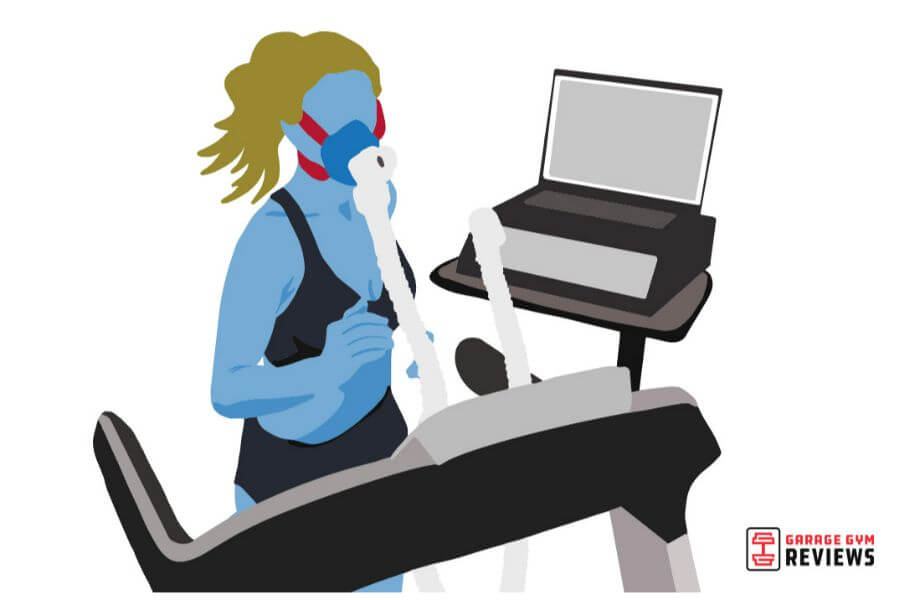
We can debunk that one, too.
But what about gaining body mass, which makes you slow?
Resistance training can (and probably will) elicit a muscle-growth response in some capacity. But as the authors of a 2022 study in the journal Sports5 state, “such an effect has not been shown in most studies conducted on runners.”
Additionally, the “interference phenomenon,” the idea that one type of training counters the progress that can be made with another, seems to work only one way: Based on a widely-cited, but admittedly older, review in the journal Sports Medicine9, training for strength and endurance simultaneously can inhibit muscle strength as compared to strength training alone, but endurance is seemingly unaffected by concurrent resistance training.
Newer research supports these findings in both regards; for example, this 2019 study10 on heavy weight training and plyometric training in well-trained runners came to the same conclusion: all groups that participated in resistance training exhibited improvements in running economy.
5 Benefits of Strength Training for Runners
Now that we’ve debunked the most popular myths among endurance athletes, let’s take a more in-depth look at what runners can gain from strength training.
1. Reduces Risk of Injury
By and large, the majority of running-related injuries are chronic or overuse injuries, according to the aforementioned 2022 review in the journal Sports5. Many of these injuries, including iliotibial band syndrome, plantar fasciitis, and patellofemoral pain syndrome (the infamous “runner’s knee”), can be attributed to “suboptimal biomechanics” like increased internal rotation of the knee, which can place excess and uneven stress on a joint.
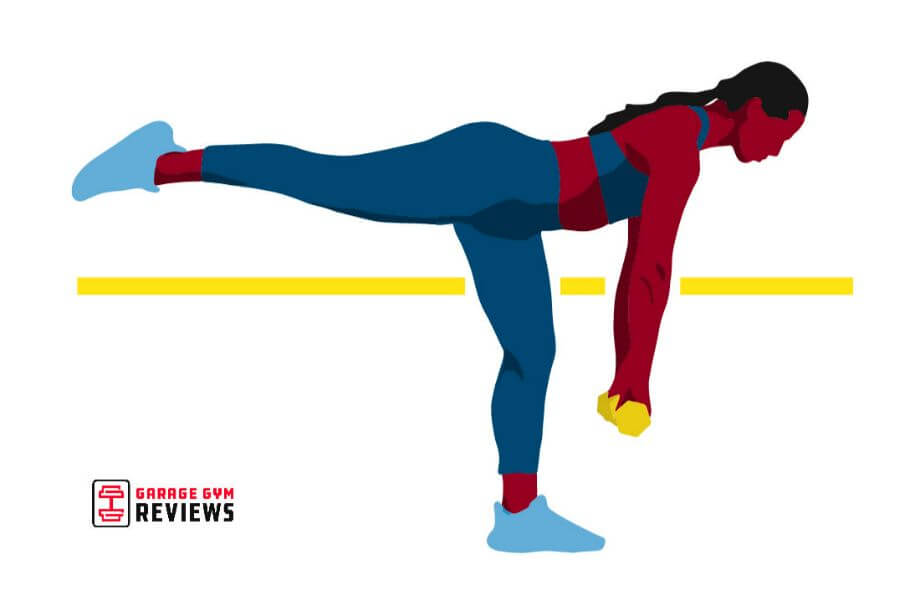
For instance, a 2009 study in the Journal of Athletic Training11 found that individuals (not necessarily runners) with patellofemoral pain exhibited weakness in the hip abductors, muscles that play an important role in external rotation and alignment of the hip. Targeted strength training programs can address weaknesses like this and mitigate injury risk during running.
2. May Improve Running Form
This is related to the above point, but worth reiterating because good running technique not only has a hand in injury prevention12, but good form also means good finish times. It’s still unclear how, exactly, strength training effects transfer to running technique, but some research13 shows that strength exercise targeting the muscles around the hips, ankles, and feet can reduce deviations in biomechanics while running.
Other research14 has associated maximal squat strength with reduced internal knee rotation while running. (If you’ll recall from above, excessive internal knee rotation is associated with patellofemoral pain.) While poor technique is probably best addressed by specific feedback drills15, we can’t count strength training out as an aid.
3. Improves Running Economy
Running economy, as you probably know if you are a runner, is (in simple terms) the relationship between oxygen consumption and running speed. In other words, running fast while utilizing minimal oxygen means you have a good running economy. Of course, this is all relative to the individual.
In any case, scientists have been proving that strength training improves running economy since the 1990s16, which is one reason I’m shocked the myths around concurrent training still float around. It’s quite indisputable at this point that resistance exercise improves running economy, based on the 2022 review in Sports5, which cites almost 50 other pieces of scientific literature supporting this thesis.
4. Makes Hills Easier
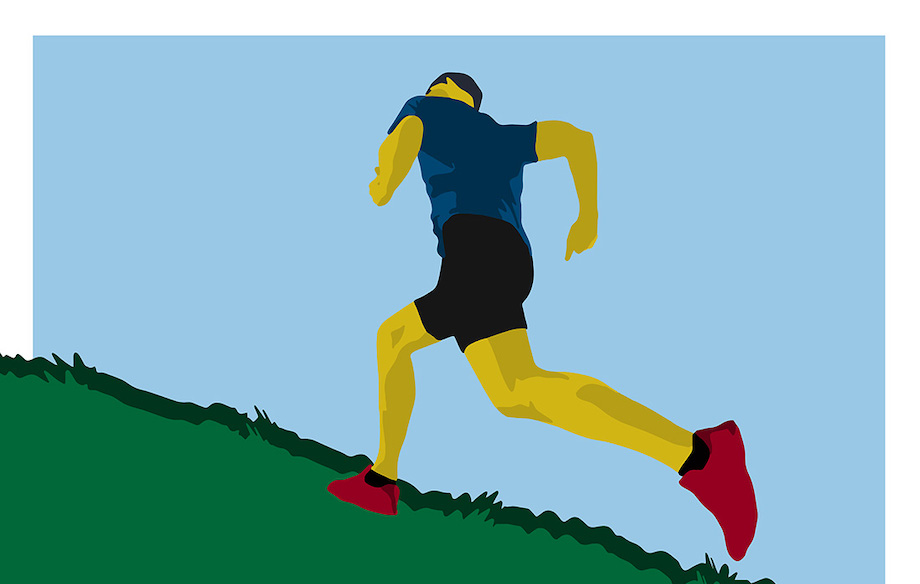
There are two ways to get good at hills: Run a LOT of hills, or add strength workouts into your regular routine. Or both! It’s extremely common for runners to tucker out on incline segments due to the increased demand on the muscular system. Strengthen your muscles and you’ll find it easier to stay strong on hills.
5. Makes You a More Versatile Runner
Strengthening your muscles can make it easier for you to tackle different types of running routes. A runner who prioritizes cross-training will likely find it easier to transition from road to trail and back to road, or run on the soft sand of the beach.
Bodyweight Exercises vs Lifting Weights for Runners
Resistance training doesn’t necessarily have to mean hitting the weight room. While there are colossal benefits to lifting heavy weights, many runners will find that bodyweight cross-training is an adequate addition to their training program. This is especially true for people who are 100% new to resistance exercise.
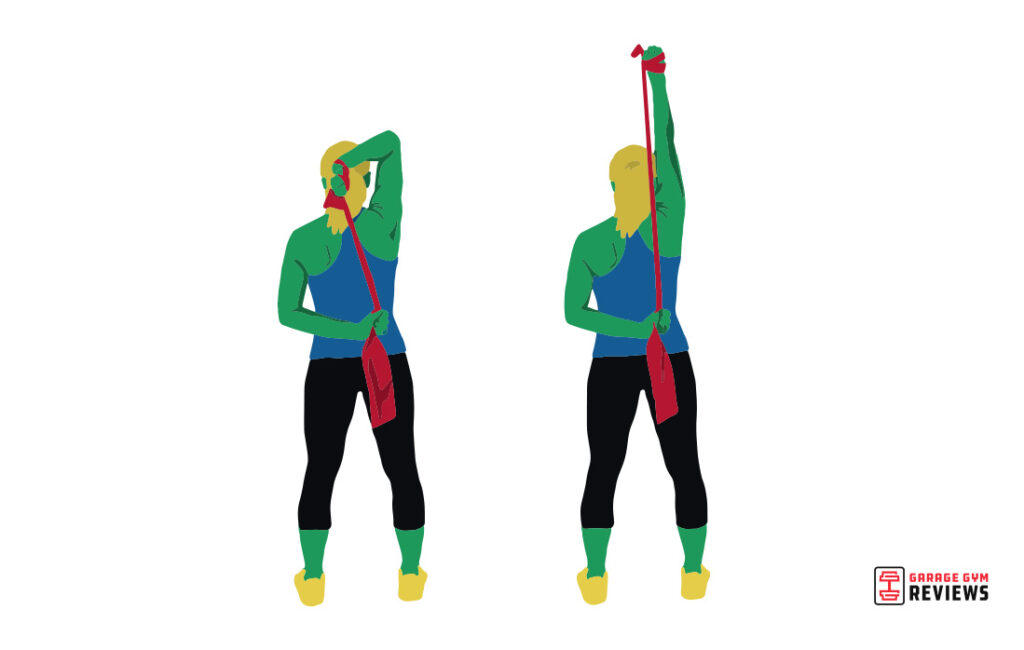
You can also use tools like resistance bands to get stronger and build muscle. Not only are bodyweight and resistance band workouts adequate for many runners, but they’re great for individuals who want to work out at home and don’t have the space for a barbell or dumbbell set.
Strength Training for Runners Workout
Try this sample strength training workout to get started on your muscle-building journey.
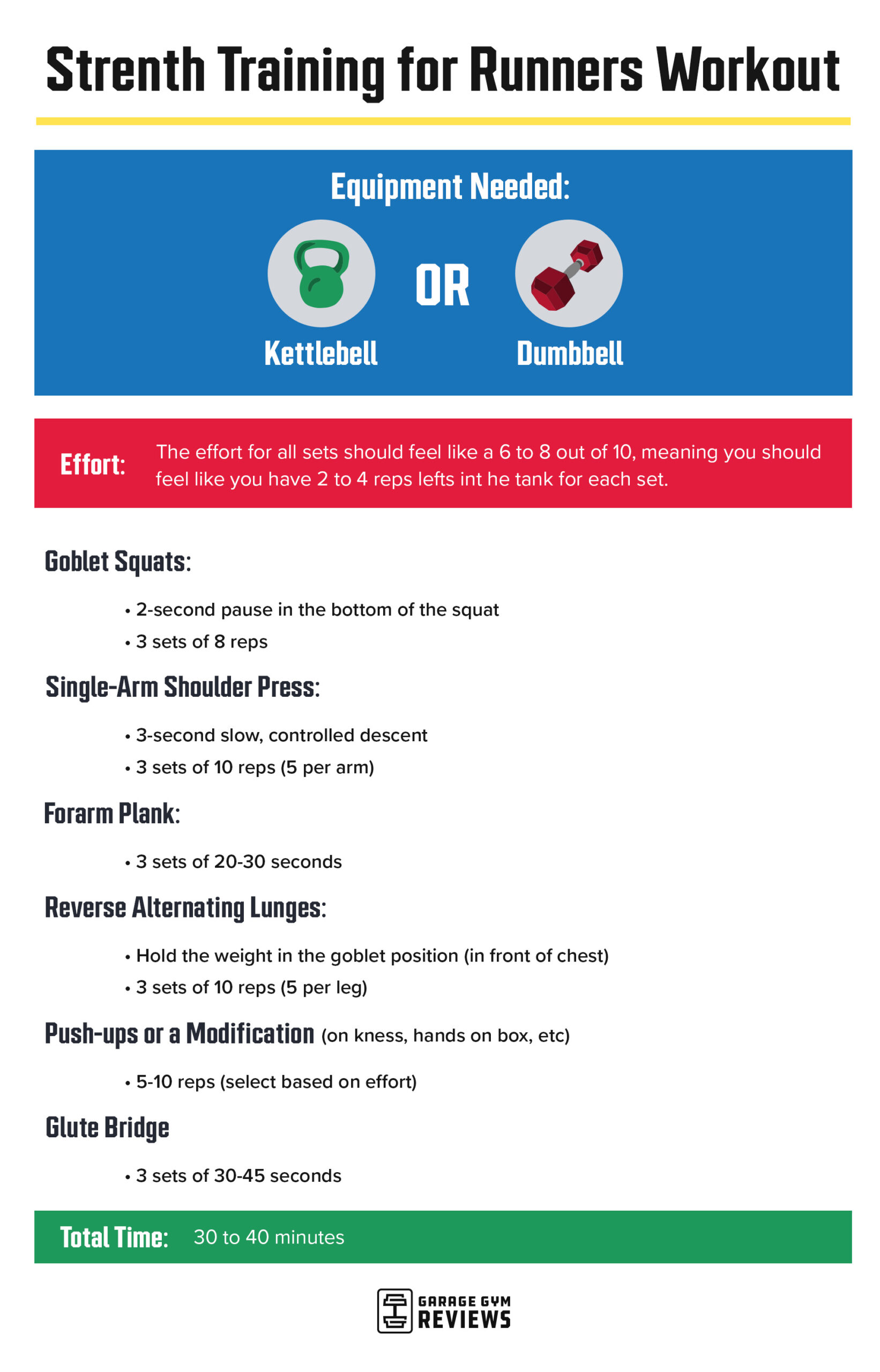
Best Strength Training Exercises for Runners
The following list of exercises is far from exhaustive, but it’s a great starting point for runners who are looking to build strength in order to improve running performance.
1. Squats
How to do it (air squats):
- Start by standing with your feet hip-width apart. Stand tall and look straight ahead.
- Hinge your hips and bend your knees to begin your descent.
- Descend as far as you can while keeping your heels on the ground and your chest as upright as possible.
- Drive through the heels to return to standing.
Why runners should do it: Squats are, according to many, the king (or queen) of strength training. This compound exercise engages virtually all of your muscles and is phenomenal for building strength and endurance in the core and lower body.
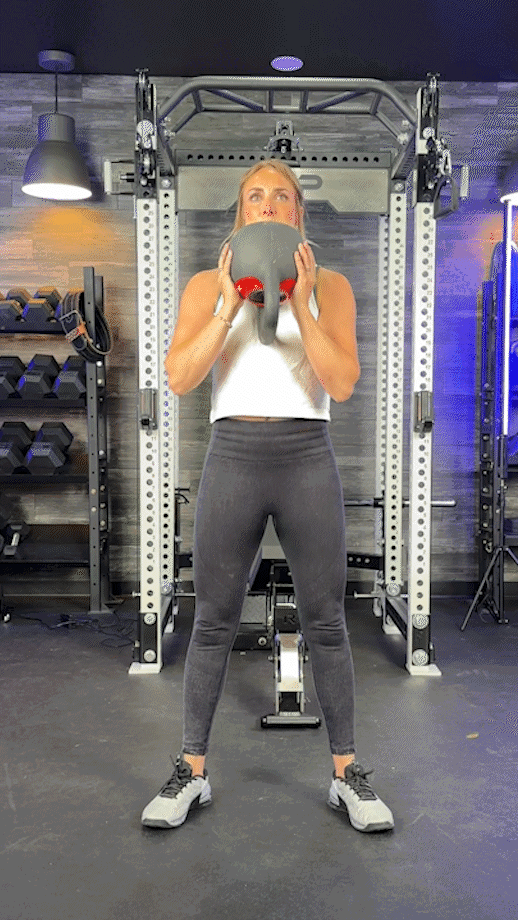
2. Deadlifts
How to do it (barbell deadlift):
- Load your bar with the appropriate weight and stand with the barbell in front of your shins.
- Hinge at your hips and bend your knees to grab the bar. Firmly grip the bar with both hands. Your spine should be in a neutral, flat position—not arched or hunched over.
- Squeeze your hamstrings and glutes to stand up, lifting the bar up from the ground while keeping it close to your body.
- The rep is complete when your hips are fully extended.
- With control, lower the bar back to the ground.
Why runners should do it: Deadlifts strengthen the hamstrings and lower back, two important muscle groups for everyone from first-time 5K-ers to those in the throes of marathon training.
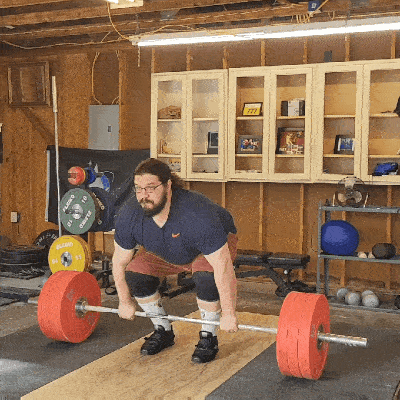
3. Kettlebell Swings
How to do it (Russian kettlebell swings):
- Stand with your feet slightly wider than hip-width apart.
- Hold the kettlebell with both hands, arms extended in front of your body.
- Hinge backward at the hips, allowing the kettlebell to swing between your legs.
- Squeeze your glutes (hard!) to propel the kettlebell in front of you.
- The rep is complete when the weight reaches eye level.
- With control, allow the kettlebell to swing back between your legs, engaging your glutes at the beginning of each new rep.
Why runners should do it: Performing kettlebell swings will develop power in the glutes and hamstrings, the primary movers of the hips—pretty important for runners to be powerful there.
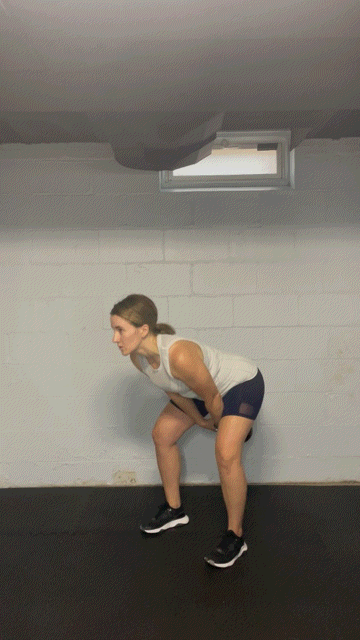
4. Lunges
How to do it (reverse alternating lunges):
- Stand with your feet about shoulder-width apart, arms by your sides or with your hands clasped in front of your chest.
- Step your right foot backward and press your toes and the ball of your foot to the ground.
- Lower yourself gently until your knee (barely) taps the ground.
- Return to standing and repeat on the other leg.
Why runners should do it: Single-leg (unilateral) exercises can address muscle imbalances and enhance activation of the core muscles, according to a 2012 study in the European Journal of Applied Physiology17.
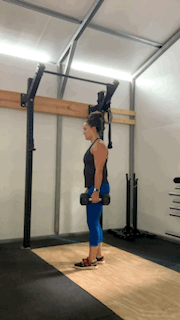
5. Medicine Ball Throws
How to do it (medicine ball throws):
- Stand 24 to 36 inches away from a wall. Stand with your left side toward the wall, holding a medicine ball in your hands.
- Keeping your feet planted firmly, rotate your torso to throw the ball as hard as you can at the wall and let it bounce off.
- Pick the ball up and repeat on the other side.
Why runners should do it: This plyometric exercise develops explosiveness and strength in the core, but more importantly, rotational strength. This skill will help you handle changes in direction and maintain proper technique on steep climbs and descents.
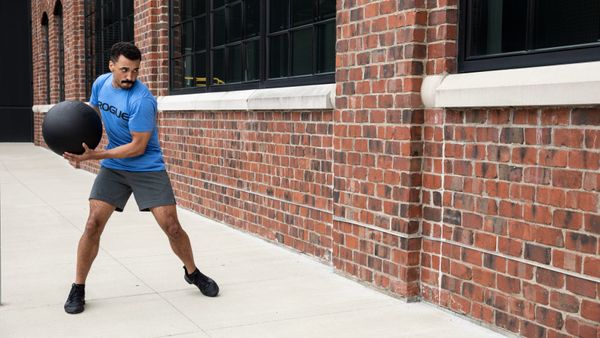
6. Glute Bridge
How to do it (glute bridges):
- Lie face-up on the ground. Bend your knees and position your feet flat on the floor.
- Squeeze your glutes and hamstrings and press your hips up to the sky. Make sure to drive your heels into the ground.
- Hold for 10 to 30 seconds and then relax.
Why runners should do it: Glute bridges teach you to activate and engage your glutes, the muscles that produce a higher peak force than any other hip-moving muscle while running, according to a 2014 study in the Journal of Orthopedics and Sports Physical Therapy18.
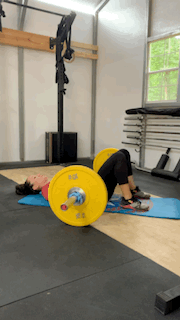
Do Runners Need to Train Their Upper Body?
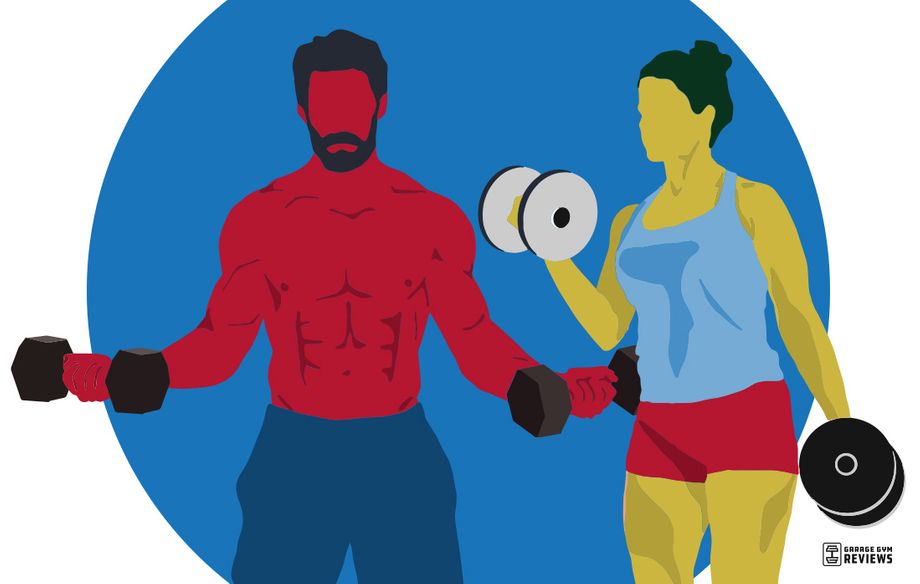
Yes! While improving muscular endurance and strength in the upper body obviously isn’t as great a priority as improving those capabilities in the lower body for runners, they should still dedicate some time to upper body workouts.
Simple exercises like push-ups, dumbbell shoulder press, and barbell rows can help you maintain good posture while running and, if you’re an ultra long-distance runner, make it easier to carry your running pack.
Strength Training for Runners: FAQs
Here are some final questions about strength workouts for runners.
What kind of strength training should runners do?
Runners should focus on compound (multi-joint) exercises to improve overall strength and unilateral (single-side) exercise to address any muscle imbalances. (It’s important to work with a personal trainer if you have muscle imbalances affecting your training.) Some specific exercises to work on include squats, deadlifts, lunges, step-ups, push-ups, shoulder press, med ball throws, bent-over rows, and kettlebell swings.
How many times a week should a runner do strength training?
Adding gym sessions to your training plan will be tough at first. Our team of experts recommends starting with just one to two sessions per week if you’re new to strength training and working your way up to three or four. Remember, strength training sessions for runners don’t need to be more than 30 to 45 minutes long.
Do runners really need to strength train?
Definitely. Doing strength training for all muscle groups is extremely important for runners. It’s one of the best ways to prevent injury and improve performance.
Should I run first or lift first?
The answer to this depends; there are two ways to look at it. If you need to get the absolute most out of your running session, run first. If you need to practice maintaining cardio endurance under fatigue, lift first. It’s a good idea to mix up the timing a bit to ensure you’re a well-rounded runner. To get the most out of both sessions, it’s typically best to separate them—for instance, running in the morning and hitting the gym after work—but that’s not always attainable for the average recreational runner.
Strength Training for Runners: Final Thoughts
Whether you’re training for a marathon, half-marathon, your first 5K, or running just for fun, weaving some strength training sessions in with your running workouts is critical. Not only will doing so help prevent running injuries but resistance training is scientifically proven to enhance running performance.
References
- Eihara Y, Takao K, Sugiyama T, et al. Heavy Resistance Training Versus Plyometric Training for Improving Running Economy and Running Time Trial Performance: A Systematic Review and Meta-analysis. Sports Med Open. 2022;8(1):138. Published 2022 Nov 12. doi:10.1186/s40798-022-00511-1
- Turner AM, Owings M, Schwane JA. Improvement in running economy after 6 weeks of plyometric training. J Strength Cond Res. 2003;17(1):60-67. doi:10.1519/1533-4287(2003)017<0060:iireaw>2.0.co;2
- Lum D, Barbosa TM, Aziz AR, Balasekaran G. Effects of Isometric Strength and Plyometric Training on Running Performance: A Randomized Controlled Study. Res Q Exerc Sport. 2023;94(1):263-271. doi:10.1080/02701367.2021.1969330
- Kazior Z, Willis SJ, Moberg M, et al. Endurance Exercise Enhances the Effect of Strength Training on Muscle Fiber Size and Protein Expression of Akt and mTOR. PLoS One. 2016;11(2):e0149082. Published 2016 Feb 17. doi:10.1371/journal.pone.0149082
- Šuc A, Šarko P, Pleša J, Kozinc Ž. Resistance Exercise for Improving Running Economy and Running Biomechanics and Decreasing Running-Related Injury Risk: A Narrative Review. Sports (Basel). 2022;10(7):98. Published 2022 Jun 24. doi:10.3390/sports10070098
- Hughes DC, Ellefsen S, Baar K. Adaptations to Endurance and Strength Training. Cold Spring Harb Perspect Med. 2018;8(6):a029769. Published 2018 Jun 1. doi:10.1101/cshperspect.a029769
- Prieto-González P, Sedlacek J. Effects of Running-Specific Strength Training, Endurance Training, and Concurrent Training on Recreational Endurance Athletes’ Performance and Selected Anthropometric Parameters. Int J Environ Res Public Health. 2022;19(17):10773. Published 2022 Aug 29. doi:10.3390/ijerph191710773
- Vikmoen O, Raastad T, Seynnes O, Bergstrøm K, Ellefsen S, Rønnestad BR. Effects of Heavy Strength Training on Running Performance and Determinants of Running Performance in Female Endurance Athletes. PLoS One. 2016;11(3):e0150799. Published 2016 Mar 8. doi:10.1371/journal.pone.0150799
- Docherty D, Sporer B. A proposed model for examining the interference phenomenon between concurrent aerobic and strength training. Sports Med. 2000;30(6):385-394. doi:10.2165/00007256-200030060-00001
- Li F, Wang R, Newton RU, Sutton D, Shi Y, Ding H. Effects of complex training versus heavy resistance training on neuromuscular adaptation, running economy and 5-km performance in well-trained distance runners. PeerJ. 2019;7:e6787. Published 2019 Apr 25. doi:10.7717/peerj.6787
- Boling MC, Padua DA, Alexander Creighton R. Concentric and eccentric torque of the hip musculature in individuals with and without patellofemoral pain. J Athl Train. 2009;44(1):7-13. doi:10.4085/1062-6050-44.1.7
- Ferber R, Noehren B, Hamill J, Davis IS. Competitive female runners with a history of iliotibial band syndrome demonstrate atypical hip and knee kinematics. J Orthop Sports Phys Ther. 2010;40(2):52-58. doi:10.2519/jospt.2010.3028
- Snyder KR, Earl JE, O’Connor KM, Ebersole KT. Resistance training is accompanied by increases in hip strength and changes in lower extremity biomechanics during running. Clin Biomech (Bristol, Avon). 2009;24(1):26-34. doi:10.1016/j.clinbiomech.2008.09.009
- Moffit TJ, Montgomery MM, Lockie RG, Pamukoff DN. Association Between Knee- and Hip-Extensor Strength and Running-Related Injury Biomechanics in Collegiate Distance Runners. J Athl Train. 2020;55(12):1262-1269. doi:10.4085/1062-6050-0532.19
- da Silva Neto WC, Lopes AD, Ribeiro AP. Gait Retraining With Visual Biofeedback Reduces Rearfoot Pressure and Foot Pronation in Recreational Runners. J Sport Rehabil. 2022;31(2):165-173. doi:10.1123/jsr.2021-0091
- Paavolainen L, Häkkinen K, Hämäläinen I, Nummela A, Rusko H. Explosive-strength training improves 5-km running time by improving running economy and muscle power. J Appl Physiol (1985). 1999;86(5):1527-1533. doi:10.1152/jappl.1999.86.5.1527
- Saeterbakken AH, Fimland MS. Muscle activity of the core during bilateral, unilateral, seated and standing resistance exercise. Eur J Appl Physiol. 2012;112(5):1671-1678. doi:10.1007/s00421-011-2141-7
- Lenhart R, Thelen D, Heiderscheit B. Hip muscle loads during running at various step rates. J Orthop Sports Phys Ther. 2014;44(10):766-A4. doi:10.2519/jospt.2014.5575




